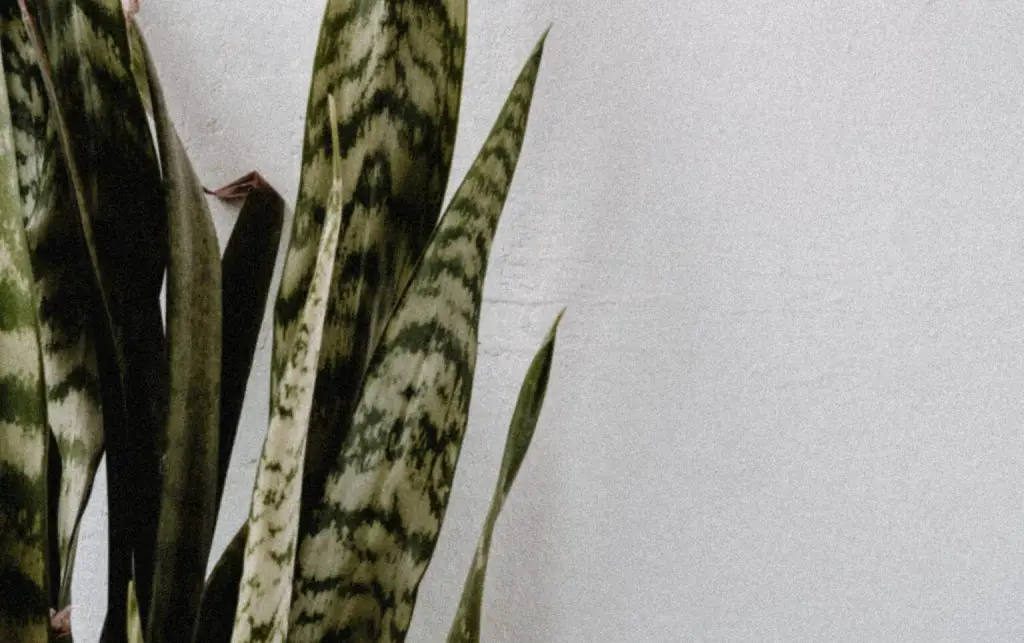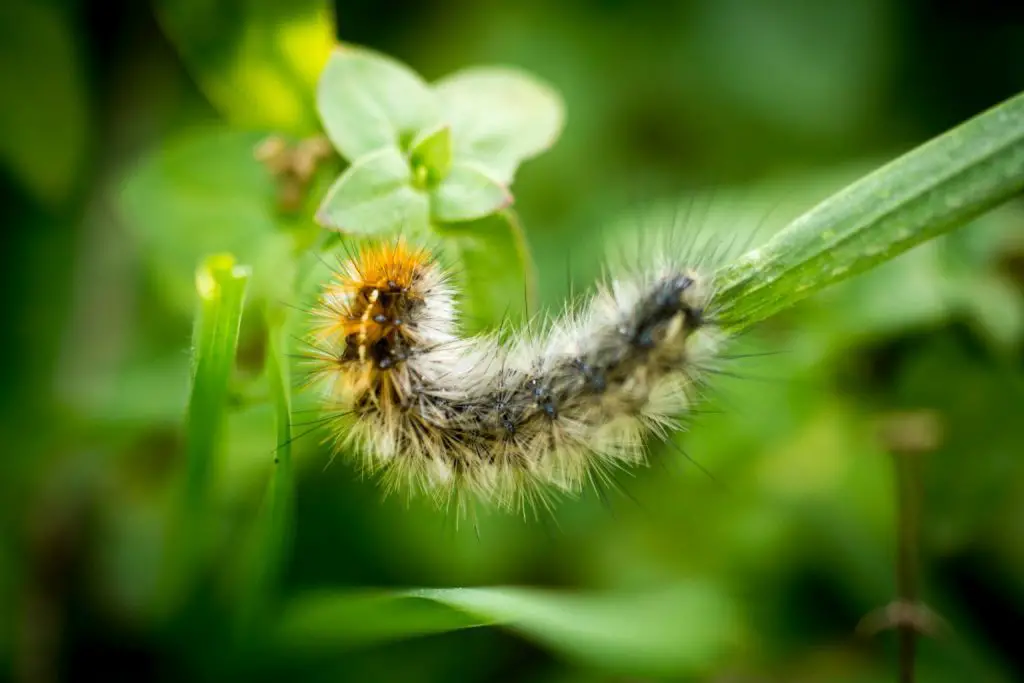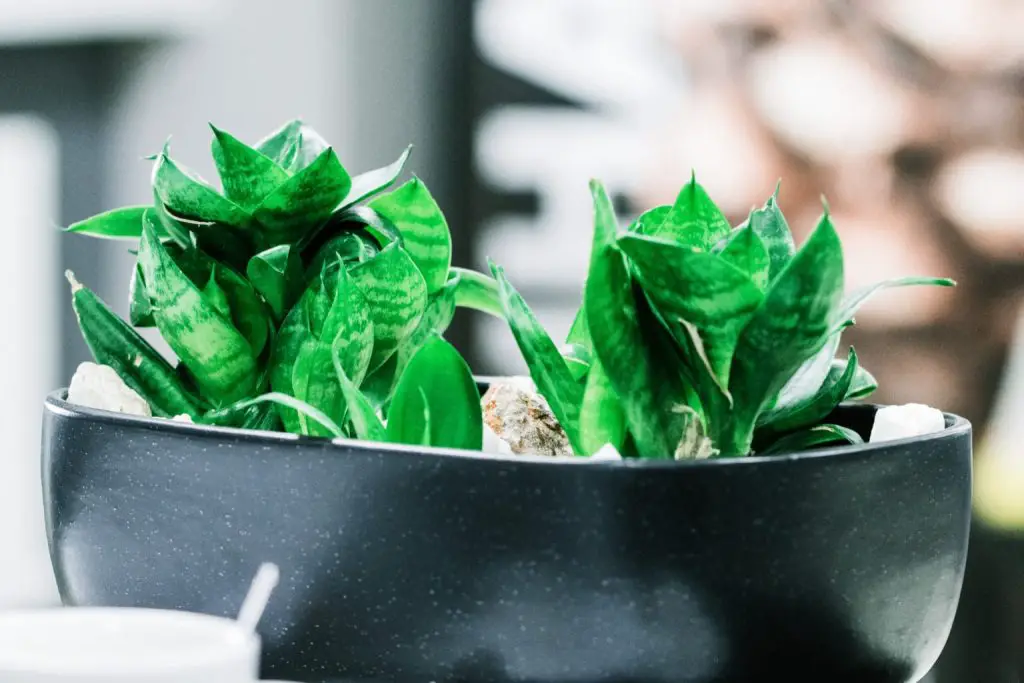Sansevieria Zeylanica is an evergreen perennial and similar-looking cousin of Sansevieria Trifasciata (snake plant). It is widely known by the name “Ceylon Bowstring Hemp” due to the fact that it is naive to Sri Lanka. This hardy, rugged plant with sword-shaped fleshy leaves naturally grows in drier areas. Much like Sansevieria Cylindrica, Sansevieria Trifasciata Laurentii and other snake plant types, this species is a popular choice for indoors as well as outdoors. Although this rough and tough plant is relatively easy to maintain, there can be some challenges while growing it away from its natural home environment. So, let’s talk about how to care for your Sansevieria Zeylanica snake plant and raise it right.
Contents
What’s The Difference Between Sansevieria Zeylanica And Sansevieria Trifasciata?
These two species are very closely related and nearly identical in terms of growth habits, appearance etc. For these reasons, Sansevieria Zeylanica plant is often confused with Sansevieria Trifasciata. However, both are different species – even though many people consider these two plant names as synonymes. Although it is not as common as Sansevieria Trifasciata (mother in law’s tongue), Ceylon bowstring hemp is just as strong and beautiful.
Both the species have dark-green, long leaves that are upright, sturdy, and sword-shaped. Horizontal pale-green wave-like stripes are dappled across the leaf surface. Between these species, there is a subtle difference in the leaf patterns. But for an untrained eye, it might be difficult to tell apart. Another distinction is about the mature height of the plant. Sansevieria Trifasciata can grow up to 5-6 feet in optimal conditions. While an adult Sansevieria Zeylanica seems to grow 2-3 feet tall.
Benefits And Uses
As an indoor plant, the sansevieria zeylanica makes a great ornamental decor. Apart from the looks, it is very hardy and drought-tolerant. It can survive temperature fluctuations and low light conditions. Easy care, hard to kill and low maintenance are some of the best qualities of this plant.
But the benefits don’t stop there. Sansevieria Zeylanica has the ability to absorb carbon dioxide and release oxygen even at night time. It also decreases the impact of airborne allergens by absorbing harmful toxins from the air. These amazing features make this plant a perfect pick for bedrooms.
On a commercial scale, the bowstring hemp is grown for making fibres. The fiber obtained from the leaves of Sansevieria Zeylanica is used in tropical countries where it is primarily cultivated. This fibre is used to create mats, coarse cloth, sails and paper pulp.
The dried rhizomes and roots of the Ceylon bowstring hemp are traditionally used for making antiseptic ointments. Its roots are useful for purgative, tonic, expectorant and anti-fever remedies. Research suggests that the aqueous extract of this plant possesses antifungal properties. Hence, it is used in the treatment of wounds.
Plant Size And Growth
Under ideal growing conditions, Sansevieria Zeylanica grows up to 3 feet tall. This plant has stiff, upright and pointy leaves that don’t spread out much. If your plants are rooted in the ground, they will multiply fast by creating new shoots through the rhizomes. Rhizomes are underground stems that grow horizontally and help the plant expand. For potted plants, there is not much space to spread out. To maintain the plant size, you can trim it or divide and repot the parts. It is required to be done every 2-3 years. In general, bowstring hemp is easy to grow and displays a slow to moderate growth rate.
Like many Sansevierias, you can keep this species as an indoor ornamental plant. However, it can thrive in the outdoor garden as well. Bright light conditions and a gentle sun a few hours a day seems to promote growth and flowering in this plant. The active growth of zeylanica snake plant happens in the warmer spring and summer seasons. Late winter- Spring is the blooming time for mature plants. During cold winters, these plants are in a resting state.
Soil
Sansevieria Zeylanica naturally grows in dry and arid regions of Asia. These plants are also found to be growing near rocks. Being tropical plants, it’s important to keep their roots on the drier side. Sitting in wet and soggy soil can rot their roots. It’ll also make the leaves bent, yellow or mushy. So, choosing a loose, fast-draining and gritty soil is really essential. This plant can adapt to a variety of soil types as long as they are well-drained and within the pH range of 6 to 7. Sandy soil allows the excess water to drain freely, thus reducing the chances of overwatering the plant.
You can make a soil mix by adding perlite, coco coir, pumice or sand into a regular or garden soil. These additives will increase the draining capacity of soil. Click here for more information on the best soil ingredients and a DIY soil mix recipes for snake plants. A potting mix made for tropical plants, or succulents and cacti also works great for the zeylanica snake plant.
Don’t forget to replace the soil whenever necessary. For instance, in case of nematode problems, or when a fungal infection occurs near the soil line.
Pot
A good pot not just looks nice but also accentuates your plants beauty. Terracotta, ceramic or plastic pots are popular pot material options for indoor use. Plus they come in different shapes and sizes. Wooden planters or concrete pots look nice for outdoor plants. You can also choose unique materials like metal or glass.
An important thing to look for in a pot is a proper way to drain off water. Use a double potting method if your ornamental pot doesn’t have drainage holes. The container should also be proportional to your zeylanica snake plant, not too big and not too small. Here’s a guide to find a perfect pot for your snake plant.
Watering
Sansevieria Zeylanica is a drought-tolerant species, so it can live without daily watering. The exact amount of water your plant needs will depend on many factors like size of the plant, season and other environmental conditions. In the warmer months of the year, you can water the plants every week. If your plants are in a bright space or out in a very dry air and hot climate, they may need more water.
During colder seasons, zeylanica snake plants require very less to no water. You can water them once a month or after every couple of months. Water the plant in the morning, so the extra water can evaporate easily throughout the day. Never water on extremely cold winter nights. Also this plant cannot tolerate overwatering.
- The best way to decide if your Sansevieria needs water is to check the dampness of soil. Stick your finger in the soil 1-2 inches deep. It should feel dry to touch. If the soil is still a little damp, wait for a couple of days.
- While watering, pour the water around the pot edges, or close to the soil surface. Make sure to fully soak the soil until water starts dripping through the drainage holes. For in-ground plants, water slowly and deeply to a depth of at least 4-5 inches.
- In case of potted plants, let all the water drain away freely. After 20-30 minutes discard the collected water in the drain tray. Do not allow the plant to sit in water.
For more information on this, check out this watering guide for snake plants.
Sunlight
Sansevieria Zeylanica can tolerate anything from the bright sunlight to low light conditions. Ideally bright but indirect sunlight seems to be best for such plants. However, harsh direct sunlight all year round can be too much. It’s better to keep them in a partial or full shade if outside. Intense light can make the leaves pale and may lose the leaf patterns. Sansevieria zeylanica may get darker green in color if kept in deep shade.
For indoor plants, a sunny window is a good choice. Place the plant near a window behind a sheer curtain, so that it can get bright light but not too much sun. Few hours of mild direct sun is also good for the plant, especially in the morning or evening. If you don’t have lots of sunlight pouring in, provide bright artificial lighting. Click here to read more about optimal light and temperature conditions for snake plants.
Temperature
Sansevieria zeylanica cannot tolerate extreme temperatures. The plant is happy anywhere between 60-75°F (15-24°C). For best results, keep the plant protected from very hot and cold climates. To keep your outdoor plants safe from the heat, keep them in a shaded area.
The Ceylon bowstring plant is not very cold hardy. It goes dormant in cold weather and the growth is stunted. In temperatures below 50°F, the leaves are likely to get damaged. It’s better to keep your plants indoors during the winter season. If the temperature is going to drop below 50°F (10°C), you can cover the in-ground outdoor plants with a heavy cloth. This will help to retain some warmth and prevent frost.
Pests And Diseases
Being tough and hardy, most Sansevieria plants are not highly prone to many pests and diseases. However, occasionally they may get attacked by mealybugs or spider mites. These two kinds of insects are the most common enemies of a zeylanica snake plant. They suck the juices from the plant leaves and make them look unappealing. Insecticidal soaps or alcohol soaked cotton swabs can be used to get rid of them.
Additionally, fungal diseases and root rot can be an outcome of too much water or poorly draining soil. You can mix in some fungicide in the soil to avoid fungal infections. Pest attacks can be prevented by keeping the leaves and roots clean and dry. By providing enough light, fertilizer and water to your plant, they’ll become stronger and can easily fight off diseases.
Fertilizer
Ceylon bowstring hemp is a light feeder that doesn’t need much supplementary feeding. It can get damaged with too much fertilizing. In fact, many people do just a single slow-release granular feeding in the year. A good time to do this is during the growth season, spring to late summer. A half-strength fertilizer monthly during the growth period is more than enough.
Feed your plant a balanced general-purpose fertilizer. Liquid and slow-release granular fertilizers are great options. Organic fertilizers like cow dung, manure, worm compost can be applied, but use them sparingly. Throw in a handful of organic feed in the potting soil mix. Check out this post for more details on fertilizing.
Here are some precautions to take while feeding your Sansevieria zeylanica.
- Never fertilize your plant in the winter. Plants are resting during this time and need minimal water and nutrients.
- Avoid feeding young plants. Small plants that are just bought from a nursery need some time to get accustomed to the new environment.
- Don’t fertilize small seedlings right after a propagation. Wait for at least one month after the plant is repotted in the new container.
Propagation
Propagation of sansevieria zeylanica is exactly like that of snake plants. These plants can be reproduced by vegetative propagation methods. Dividing the root-ball, planting rhizomes or leaf cuttings are reliable methods to create new plants. Here’s how you can propagate a zeylanica snake plant quickly by plant division.
- After making sure that the plant is old enough, gently remove the plant from its container.
- Inspect the roots and rhizomes to see where they can be naturally separated. Remove any damaged parts of the root.
- Using a sharp and sterilized knife, cut the plant in half. For bigger plants, it’s possible to make more than two plants.
- Repot each section in a separate container. Water them thoroughly.
Another popular method is using healthy leaf cuttings. This method may occasionally revert the new plant from a specific cultivated form to their parent type. To know about other propagation methods like leaf cuttings or water propagation, check out this guide.
Repotting
The bowstring hemp plant likes to be slightly root bound. But it can overgrow its container and require transplanting. Normally this can be done every 2-3 years. Repotting will make the plant look tidier. It also allows the plant to get enough water and nutrients, which ultimately makes the plant stronger and resilient.
Click here for an in-depth guide on repotting a snake plant. Here are some basic steps to do this:
- Make sure to get a container with an appropriate size. It should be 1-2 inches wider in diameter than the current pot.
- Add a thin layer of pebbles or rocks at the bottom to cover drainage holes. Then put a sufficiently thick layer of soil over that.
- Carefully separate your plant from its old pot and lightly open up the roots with your fingertips.
- Place the plant in its new pot at similar depth. Then fill the rest of the container with the soil mix.
- Finally, water the plant thoroughly and wait for the soil to get dry before watering it again.
Grooming And Maintenance
Sansevieria zeylanica is a hardy and low maintenance plant. It can grow well even with minimal care and doesn’t require regular pruning or tidying up. Trim it only to remove dead or damaged leaves.
If the leaves are severely damaged by cold, they may not be revived. Sometimes leaves on the outer side may fall over as the pot becomes crowded. In such cases, cut off the leaves with a sterilized tool to maintain a healthy look of the plant. Wipe the leaves once in a while to remove dirt and keep them clean.
Pets And Kids Safety
Like most Sansevierias, zeylanica plant is mildly toxic when eaten. It is considered toxic for cats and dogs. Although consuming a little part of the plant is not likely to kill your pet, it’s better to take good precautions. Be sure to keep your pets away from the plant. The toxins can also affect humans. So if you have children, be cautious to keep the plant out of their reach.
Sansevieria plants contain a toxic chemical Saponin which can cause mouth and stomach irritations when ingested. Common symptoms of the plant poisoning are vomiting, diarrhea, nausea, stomach pain, drooling etc. Touching the leaf juices can result in rashes or dermatitis in some people. Use gloves whenever you are trimming, propagating or repotting this plant.


